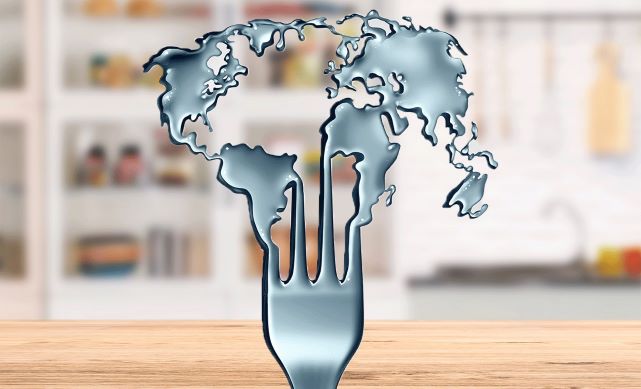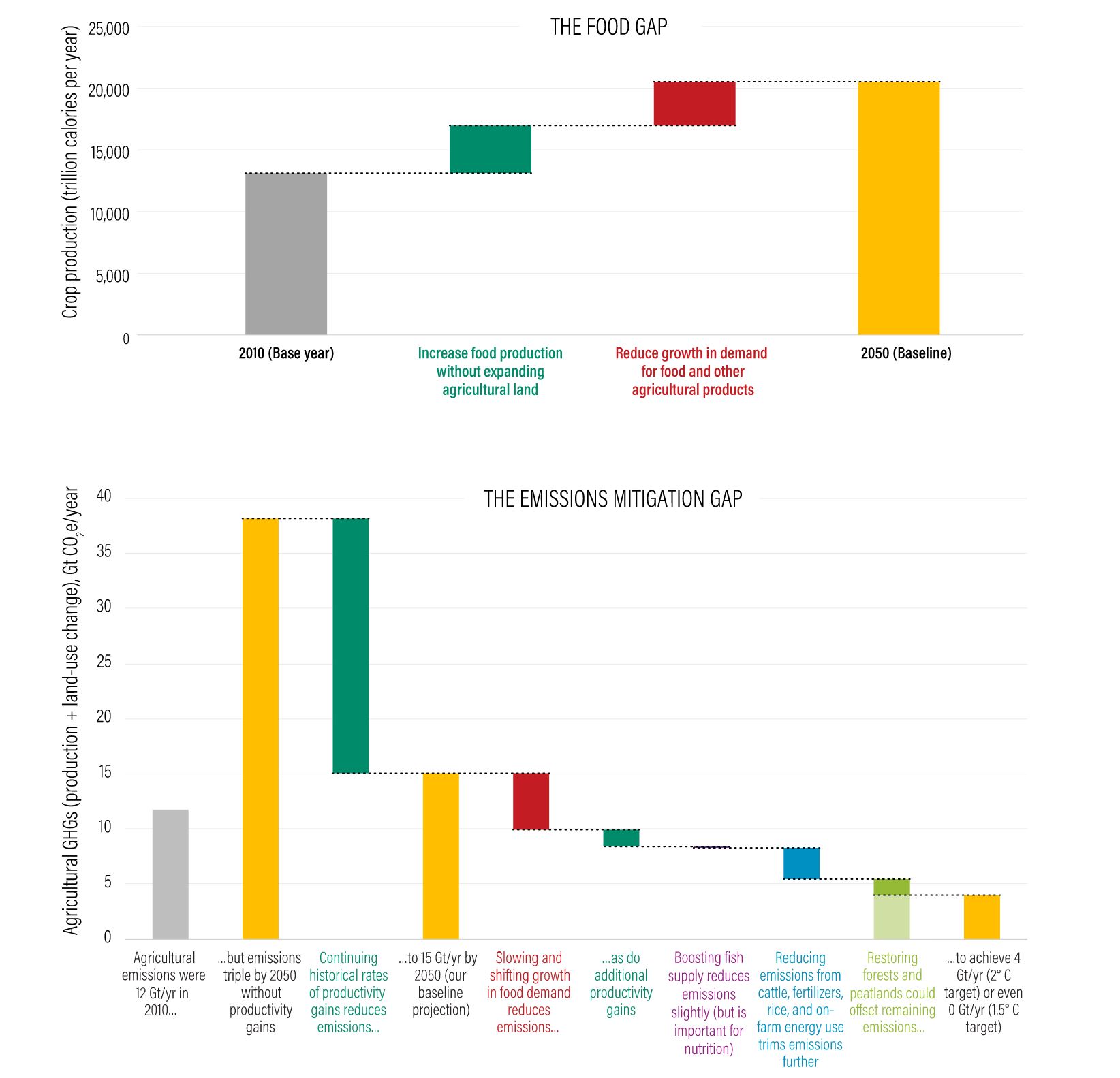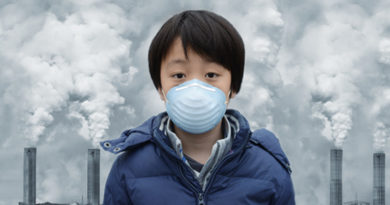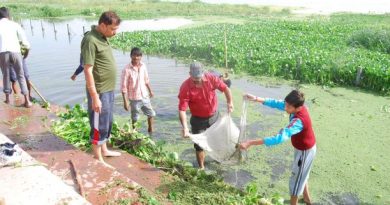Food Sustainability: Research Suggests a 5-Course Menu

With the world population expected to reach nearly 10 Billion by 2050, a new report shows the global food system must undergo urgent change to ensure there is adequate food for everyone without destroying the planet.
The Report titled: Creating a Sustainable Food Future reveals that the challenge entails closing three gaps:
1. A 56 percent “food gap” between what was produced in 2010 and food that will be needed in 2050;
2. A nearly 600 million-hectare “land gap” (an area nearly twice the size of India) between global agricultural land area in 2010 and expected agricultural expansion by 2050 and
3. An 11-gigaton “greenhouse gas mitigation gap” between expected emissions from agriculture in 2050 and the level needed to meet the Paris Agreement.
The need to change people’s consumption habits and adjustment in food systems, the report gives policymakers, businesses and researchers a comprehensive roadmap for how to create a sustainable food system from farm to plate.
Andrew Steer, President and CEO of the World Resources Institute, says that food must always be linked to every climate strategy. Millions of farmers, companies, consumers and every government on the planet will have to make changes to meet the global food challenge. At every level, the food system must be linked to climate strategies as well as ecosystem protection and economic prosperity. He adds that the report has solutions to tackle the challenge. “While the scale of the challenge is bigger than is often thought, the solutions we’ve identified have greater potential than many realize. There’s a reason to be hopeful we can achieve a sustainable food future.”
Produced by World Resources Institute in partnership with the World Bank, UN Environment, UN Development Programme, and the French agricultural research agencies CIRAD and INRA, the report outlines a menu of solutions to overhaul the way the world produces and consumes food to ensure a sustainable food system by 2050:
- Reduce growth in demand by cutting food loss and waste, eating healthier diets, and more;
- Increase food production without expanding agricultural land area via yield gains for both crops and livestock;
- Protect and restore natural ecosystems by reducing deforestation, restoring peatlands, and linking yield gains with ecosystem conservation;
- Increase fish supply by improving aquaculture systems and better managing wild fisheries; and
- Reduce greenhouse gas emissions from agricultural production through innovative technologies and farming methods.
Many of the report’s findings use the new GlobAgri-WRR model, which quantifies how far each “menu item” can help to increase the availability of food, avoid deforestation, and reduce GHG emissions. The report also identifies a robust series of policies, innovations, and incentives that can take the solutions to scale.
The report also highlights the importance of technology which will play an important role in global food challenge.
“Technology will be one of the keys to the food system’s future success. There is no realistic potential to create a sustainable food future without major innovations,” said Tim Searchinger, senior fellow at WRI and lead author of the report.
“Industry is already creating exciting breakthroughs like feeds that suppress the formation of methane in cows’ stomachs. We need both more funding for research and development, and flexible regulations to give the private sector incentives to innovate.”

To read the report click here: Creating a Sustainable Food Future




